is
F1H2O?
The UIM F1H2O World Championship is the ‘flagship’ international series of single-seater inshore circuit powerboat racing that is organised by H2O Racing under the auspices of the Union Internationale Motonautique (UIM).
The UIM F1H2O World Championship offers a thrilling spectacle to spectators and television viewers alike. It is highly competitive, challenging, rapid-fire and provides the ultimate adrenalin rush for competitors and viewers alike.
Each Grand Prix in the international calendar lasts around 30 minutes and usually takes place on a lake, river, dock or sheltered coastal bay. Points are awarded to the top 10 finishers in each race with 20 going to the race winner, 15 for the runner-up, 12 for third and then nine, seven, five, four, three two and one down to 10th place.
As a new innovation for the 2024 season and beyond, each Grand Prix also hosts a pair of Sprint races where the starting line-ups are determined by qualifying positions with the field split into two groups of nine drivers for 2024. Points are then awarded to each of the Sprint race finishers, from 10 to the heat winner down to two points for ninth place.
However, with the thrilling high-speed action comes the risk of ruin as drivers endure brain-numbing G-Forces - their rigs taking hairpin turns at over 90mph while they dice deck-to-deck in often zero-visibility.
The series attracts up to 20 of the world’s leading drivers and is a sport that has to be seen to be believed as these diminutive tunnel-hull catamarans enter hairpin turns at over 145 km/h and top 226 km/h on the straights with a world record speed of 261km/h.
On shorter, tighter race courses, UIM officials may implement a rolling start on safety grounds but the normal procedure is for drivers to line up on a start pontoon in qualifying order. Engine changes, any technical issues and penalties imposed can affect that starting order in the build-up to each race.
The sleek powerful and lightweight race boats are normally held in situ on the start pontoon by a crew member as the countdown begins to the race start. After a two-minute warning from UIM officials, there is a 30-second countdown and then three lights appear from the start boat and the start is signalled. This unleashes 10,000hp of highly-tuned Mercury two or four-stroke power, a plethora of noise and a glorious fountain of spray from the rear of the race craft as they head flat out in line to the first commitment buoy.
In 1993 the UIM appointed Nicolo di San Germano as Promoter; his ongoing 30 year tenure has brought stability, a new direction, improved safety and an ever broadening geographic footprint encompassing Europe, the Americas, the Middle East and Asia and with this expansion a growing commercial value.
Running first and in clean water can be a distinct advantage as each driver has to overcome brain-numbing G-forces through the turn buoys and down the straights, while keeping an anxious eye on their rivals, often in bright and dazzling sunlight, spray conditions or rain. Often they can take a turn at 140km/h, top 226 km/h in the straight, with a world record speed of 261km/h and experience similar G-forces to those experienced in a Grand Prix car or a fighter jet.
While today’s F1H2O catamarans bear a striking resemblance to those in action throughout the 1980s, there is a world of difference in terms of driver protection and general safety. Early boats were constructed from thin plywood with drivers sitting in an open, exposed cockpit with the risk of injury a high probability in the case of the boat tipping over in an accident.
With safety at the forefront of boat development, British designer and racer Chris Hodges set about improving the situation and he constructed a safety cell that was produced from an immensely strong composite material. Instead of the cockpit being part of the main structure, Hodges’s capsule was separate and was fitted to the hulls and centre section.
The new device proved itself on several occasions and the U.I.M. called for it to become compulsory, and in the early 1990's Burgess introduced canopies that made cockpits fully enclosed.
For the first time drivers were actually strapped into their seats. The idea was that if a boat was involved in an accident, the timber hulls could break up and absorb the impact forces while the driver remained well protected inside his safety cell. The new device proved itself on several occasions and the UIM called for it to become compulsory.
Then, in the early 1990s, Burgess introduced canopies that made cockpits fully enclosed and much safer. In the late 1990s, further developments saw the introduction of an airbag in the cockpit that would inflate in the event of a crash to ensure the capsule wouldn’t sink before rescue crews could attend.
Boat construction has developed extensively over the years and now they are built of modern composite materials.
The Union Internationale Motonautique (UIM) is the world governing body for all Powerboating activities. It is fully recognized by the International Olympic Committee (IOC) and is a member of the Association of the IOC Recognized International Sports Federations (ARISF) and of SportAccord for whom the UIM President serves as President and Board member. The UIM has almost 60 affiliated National Federations. Circuit, Offshore, Pleasure Navigation and Aquabike are among the main disciplines. The UIM has signed a Cooperation Agreement with the United Nations Environment Program (UNEP) to further its range of environmental initiatives and to share expertise.
President: Dr. Raffaele Chiulli
General Secretary: Thomas Kurth
H2O Racing is appointed by the UIM as the sole and exclusive worldwide promoter of the UIM F1H2O World Championship, the UIM- ABP Aquabike World and European Continental Championships and the UIM H2O Nations Cup World Series.
The company is the worldwide television and commercial rights holder for all Championships and responsible for all commercial, marketing, television, media and organisational activities.
Founder: Nicolo di San Germano
Senior Vice President: Lavinia Sanzovo Cavallero
The F1H2O World Championship is the leading formula in single-seater inshore circuit powerboat racing and was sanctioned by the UIM in 1981.
It is a multiple Grand Prix series of events taking place in Europe, the Middle East and Asia.
Points allocated at each Grand Prix count towards the overall World Championship standings.
In addition to the World Championship, points are also allocated for the Pole Position and Team Championships.
A 3-tiered qualifying session is run over 60 minutes, boats are then divided into 2 Sprint Races lasting 15 minutes each. All boats are finally competing in the Grand Prix run over a 30 minutes race. In 2024 nine teams, 18 drivers from 12 countries plus technicians and support staff will compete for the coveted world title.
DAY 1
One-hour free practice with all boats on the water.
Drivers’ briefing (compulsory all team managers, drivers and radiomen of each boat).
DAY 2
Qualifying sessions (Q1, Q2 and Q3) that will determine the starting order for the two Sprint races and the Grand Prix.
Two 15-minutes Sprint races based on the qualifying results.
Drivers’ briefing (compulsory all team managers, drivers and radiomen of each boat) at race headquarters.
DAY 3
Free morning practice session for all boats.
Parade Lap.
Grand Prix.
Podium presentation.
Pole position and starting line-ups are determined by a three-tiered qualifying session, Q1, Q2 and Q3 preceding each Grand Prix race. Stateof-the-art timing equipment records the performances of each boat to decide the final classification and starting positions.
Q1: A twenty-minute session with all boats entitled to run multiple laps at any time during the session, with the 12 fastest progressing into Q2. The times set by those that didn't qualify for Q2 denote their starting positions.
Q2: After a seven-minute break, the times will be reset and the remaining 12 boats will then run a fifteen-minute session - again they may complete as many laps as they want at any time during that period. At the end of the session the six fastest boats will progress into Q3. The times set by those that didn't qualify for Q3 denote their starting positions.
Q3: The times are reset and the top six boats from Q2 will run all together for 10 minutes and the arrival order at the finish line will decide their start positions.
If a driver is deemed by the officials to have stopped unnecessarily on the circuit or impeded another driver during qualifying, his times may be cancelled
No refuelling allowed during timed trial.
Sprint Race Group A 15 minutes long (starting grid based on qualifying).
Sprint Race Group B 15 minutes long (starting grid based on qualifying).
GROUP A: will feature the boats that qualified fastest, fourth, fifth, eighth, ninth, 12th, 13th, 16th, 17th.
GROUP B: will feature boats that qualified second, third, sixth, seventh, 10th, 11th, 14th, 15th, 18th.
Every race circuit is different in size, but are generally about 2000 meters in distance. Each circuit has at least one long straightaway and several tight turns, mostly left with one or two right turns.
The turns produce a G-force of up to 4.5 on the driver, which means his weight is multiplied 4.5 times as he makes a tight U-turn at over 100 mph.
Water is a constantly changing unstable unpredictable surface and conditions play a major part in the outcome of each Grand Prix.
With water current and wind conditions varying on every lap and spray being continually showered over the tiny console screen, drivers are quite often driving 'blind' at full speed, mere inches away from their rivals.
In the event of a 'barrel-roll' (capsize), a mandatory air bag installed above the pilot's head will inflate upon contact with water. This enables the cockpit to remain above water until rescue arrives.
All drivers have a self-contained air supply fitted inside the capsule as an added safety features.
LIGHT SIGNALS
Each entry must have the electronic time-keeping device and lighting equipment. Compliance is required for scrutineering clearance.
Lights signals are used in accordance with these rules to designate specific times or to give instructions to pilots.
Lights and their purposes are as follows:
YELLOW:
Reduce speed to 4000 rpm maximum - extreme caution on race course – hold current position - no overtaking - follow pace boat.
RED:
Race stopped, slow down instantly and return to the start dock, identical to actual black flag.
Boats that have broken down and pulled to the infield or off the racecourse will be towed to the trailer or the start dock only during a «race stop» condition and if pick-up boats are available.
During the time trials and the race, one crewmember should always remain at signalling area and maintain radio contact with his driver during free practice, timed trials and race.
20 points
1st
15 points
2nd
12 points
3rd
09 points
4th
07 points
5th
05 points
6th
04 points
7th
03 points
8th
02 points
9th
01 point
10th
Each team consists of a manager, two drivers, mechanics, radio coordinator, technical coordinator and equipped with infrastructure such as trailer workshop and welcome marquee.
Imagine this: up to 20 lightweight, 17-foot carbon fibre catamarans hurtling around a racing circuit at speeds topping 220km/h (130mph); all boats are powered by highly tuned V6 outboard engines, each pumping out 400HP at close to 10.000 rpm; they boast an awesome power to weight ratio and weigh in at around 500 kilos.
HULL: Twin sponson, tunnel-hull catamaran
MANUFACTURERS: BABA, Blaze, DAC, GTR, Molgaard, Moore, Victory
HULL MATERIALS: Carbon fibre, Kevlar, synthetic fibre, airex & nomex
LENGTH: 5.10 metres (min)
WIDTH: 2.1 metres (min)
WEIGHT: 550 kg (including residual fuel and oil), the driver with personal equipment, but excluding loose water, circa 380 kilos (not including driver or engine)
FUEL TANK: Carbon constuction, built to accomodate circa 120 litres
ENGINE: Mercury or equivalent outboard engine 6 cylinders 2-stroke - Mercury 360 APEX, 4 stroke - 360 horsepower at 7000rpm - 4,6 liter
STEERING: Cable with electronic power assist, ratio open to driver preference
GEARBOX: Fixed ratio direct drive
PROPELLERS: As gearbox is fixed ratio, various diameter and pitch from 10.5 by 16 inch upwards (dependant on length of circuit). Forged stainless steel alloy CNC machined
HORSE POWER: circa 400 HP @ 10,000 rpm
TOP SPEED: Over 220 km/h (136 mph)
ACCELERATION: 0-100 km/h (60mph) in circa 3 seconds
BOAT CONTROLS: Hydraulic ram systems controlling engine angle and height operated by a series of switches on steering wheel, dash and foot rest. Foot throttle controlling engine power delivery
SAFETY FEATURES: Cockpit built in composite materials, crash boxes built with energy absorbent foam. HANS head and neck support, airbag, polycarbonate nine millimeter screen and deformable frontal areas to stop penetration in event of accident. Life support system, air bottle and demand valve with helmet attachment used if boat capsizes and driver unable to exit cockpit prior to arrival of rescue boat and team. Inside cockpit the driver is strapped into a carbon hybrid moulded seat with 5 point harness and detachable steering wheel for easy entry and exit. Cockpit canpy latched into closed position for maximum protection against water pressure
The Osprey Powerboat Rescue Team provide rescue services for many powerboat racing events and has a fleet of 6 specialist drop front ambulance boats, 2 of these boats are permanently assigned to providing rescue services to the UIM F1H2O World Championship.
Each boat is manned by four fully trained individuals
2 qualified rescue divers in full kit;
1 qualified helmsman;
1 radio/communications operative;
Every member of the crew holds a current Basic Life Support Certificate.
Every member of the crew wears a wetsuit as maximum flexibility is required.
Carried on board each boat are the following
2 sets of self-contained breathing apparatus;
1 stabilisation frame in the event of a race boat being upside down;
1 Lift bag to prevent a race boat sinking in the event of extensive damage;
1 fire extinguisher;
1 spine board and stabilisation blocks;
1 oxygen set;
1 radio for communications with the shore based medical team and officials;
1 comprehensive medical kit that contains specialist resuscitation and trauma equipment, details below:
To control catastrophic haemorrhage
- CAT tourniquet
- ‘Quick Clot’ ACS sponge
- 6” Haemorrhage control bandage
To control airway with c-spine control
- Suction – hand held with spare spout
- Nasopharyngeal airways - size 24 (child) & 28 (adult)
-Gels size 4 adult (50-90Kg) size 3 (30-60Kg) - gel sachet on each
To control breathing
- Non-rebreather oxygen mask x2
- Ambu-bag, connector & Facemask
To control circulation
- Cannula x2, tape, IV giving set, IV fluids – Saline 1000, Gelofusin 500
- Protection and General Kit: gloves, field dressing packs x2, tuff-scissors, stethoscope, saline eyewash, foil blanket, triangular bandage, safety pins, light bandages x2
At each event the team brings
A training rig to train and test drivers in escaping from an upturned cockpit.
An air compressor to fill diving air cylinders and drivers’ emergency air cylinders carried on the race boats.
Generators to provide power
A Global Positioning System to ensure the course is laid correctly and to specification.




